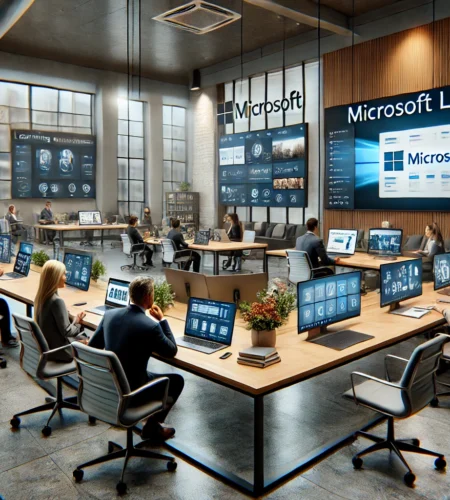With the shift toward hybrid work settings becoming more prevalent in companies today, organizations are actively looking for ways to ensure smooth operations. A key player in this transformation is Learning Management Systems (LMS), which offer resources for employee training and growth. Among the array of options, there is a standout solution known for its seamless integration features and easy-to-use interface: the Microsoft LMS.
Understanding LMS in Modern Workplaces
Learning management systems such as the Microsoft LMS function as tools that support learning and skill development by providing a hub for materials that can be easily accessed and managed in various work environments. These systems are designed to accommodate the different needs and preferences of employees in today’s dynamic work settings.
The Role of Microsoft in LMS
Microsoft’s participation in LMS solutions provides benefits to both users and educators. Renowned for its proficiency in software development, the company facilitates integration with applications, enhancing the overall learning process. By utilizing these tools, Microsoft reduces the complexity of adapting to a new system. Moreover, its cloud-based framework guarantees the accessibility and security of resources for all stakeholders involved.
Features Benefiting Remote and Hybrid Teams
There are several aspects that contribute to the advantages of Microsoft’s LMS for hybrid teams. To start, chat and video conferencing features facilitate collaboration on the platform, enhancing interaction and maintaining connectivity among team members. Additionally, automated reporting is available, providing insights into employee development and involvement. Moreover, customizable learning paths offer tailored training options to accommodate varying skill levels and requirements.
Improving the User Experience
Enhancing user experience continues to be a focus in crafting a Learning Management System (LMS). The user interface should remain user-friendly to streamline navigation and save time for users interacting with the platform efficiently and effectively. Microsoft’s LMS accomplishes this goal by presenting a structured, neat layout that’s easy to navigate and understand at a glance. Additionally, its mobile-friendly design enables users to access learning materials across devices, encouraging flexibility and convenience in the learning process.
Incorporating Existing Tools
It’s crucial to ensure that the new LMS integrates smoothly with existing systems for a seamless transition process in the workplace. Microsoft’s solution stands out in this aspect by connecting with other applications. This seamless integration promotes a work environment where data moves effortlessly across platforms, helping employees focus on learning tasks rather than getting caught up in technical difficulties.
Factors to Consider Regarding Security and Compliance
In today’s technology-driven world, ensuring data security and following regulatory requirements are vital considerations. A Learning Management System (LMS) should strictly follow security protocols to safeguard sensitive data. Microsoft’s LMS utilizes encryption methods and other security features to guarantee the safety of data. Moreover, this system complies with industry standards, providing organizations with reassurance when managing employee information.
Encouraging Lifelong Learning
Building a culture that promotes learning is advantageous for both individuals and companies. The goal of an LMS should be to inspire continuous education through the availability of a wide range of learning resources. Microsoft’s platform offers a variety of content, including videos, articles, and interactive modules. This broad selection helps to keep users interested and motivated to explore new learning experiences.
Conquering Obstacles During the Execution Phase
When introducing a Learning Management System (LMS), there are obstacles to overcome, such as resistance to change and technical hurdles that may arise. To tackle these challenges effectively and ensure a seamless transition for everyone involved, it’s crucial to offer training sessions and ongoing assistance. Microsoft’s LMS platform comes equipped with resources and guidance to streamline the implementation process. Creating an environment where employees feel at ease using the system will not only boost acceptance rates but also lead to more positive outcomes in the long run.
Assessing Achievement and Influence
Assessing the effectiveness of an LMS requires evaluating how it influences employee productivity and satisfaction within the company. It is essential for businesses to consistently monitor key indicators, such as course completion rates and user feedback, as part of this evaluation process. Microsoft’s LMS offers in-depth data analysis capabilities that empower organizations to monitor progress and make informed decisions. By measuring achievements in this way, companies can continuously refine their approaches to learning and development.
Summary
The transition to hybrid work settings necessitates the implementation of tools that foster progress and advancement within the workforce. Learning Management Systems (LMS) play a crucial role in achieving these objectives. The array of functionalities provided by Microsoft’s system proves to be advantageous for modern work environments—from seamless integration to heightened security measures. By adopting an LMS platform, companies can enhance employee engagement, boost motivation, and ultimately drive success.
